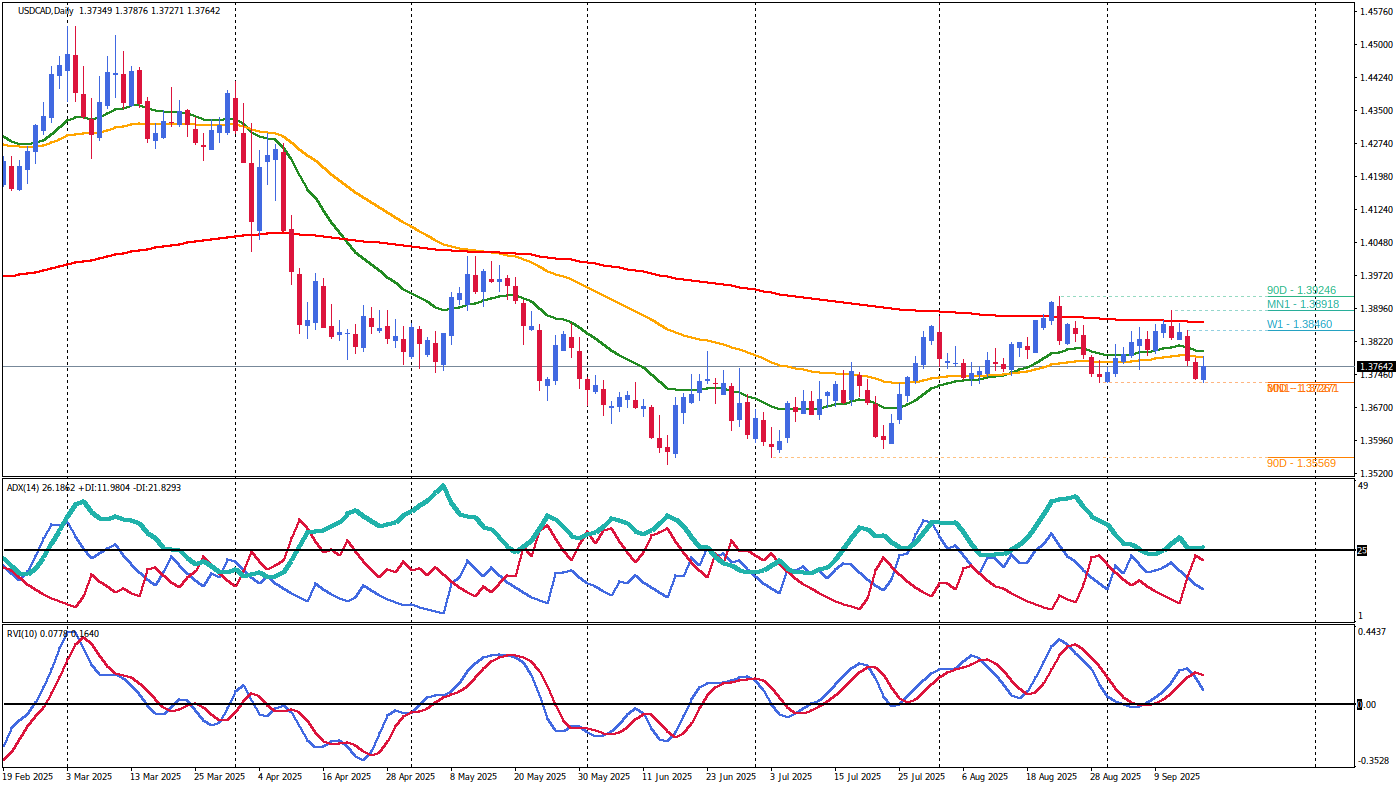
Economic Context and Recent Developments
The Canadian dollar (CAD) has shown significant volatility following the Bank of Canada's (BoC) decision to cut interest rates from 2.75% to 2.50%, marking a pivotal shift in monetary policy stance as economic indicators have deteriorated.
Key factors driving this change include:
- Economic contraction: Second-quarter GDP declined by approximately 1.5%, with exports falling dramatically by 27% following the reversal of Q1 pull-forward effects due to tariff uncertainty
- Labor market weakness: Unemployment rose to 7.1% in August, up from previous levels as job losses concentrated across trade-sensitive sectors
- Softening inflation trends: Core inflation measures have shown reduced momentum with underlying inflation assessed at approximately 2.5%, while the removal of retaliatory tariffs is expected to further reduce price pressures
BoC's Policy Rationale and Communication
The BoC explicitly cited "a weaker economy and less upside risk to inflation" as justification for today's rate cut, signaling a significant shift from their previous stance. This represents substantial policy change compared to the July Monetary Policy Report (MPR), where the bank had maintained rates despite similar economic conditions.
Bank Governor Tiff Macklem emphasized during his post-decision press conference that "the balance of risks has changed" and stated, "we see some effects of counter-tariffs in food but most have been dropped." He also noted Canada's expected 1% growth for the second half of 2025 with continued economic slack through 2026.
USD/CAD Technical Analysis
The USD/CAD pair has demonstrated clear bearish momentum following today's rate decision, trading at:
- Current levels: Trading around the 1.3758 level after initially rising to a session high of 1.3769 before retreating below key moving averages
- Critical support areas:
- Immediate support at 1.3743-1.3759 swing zone (price has rotated lower from this area)
- Key psychological level and neckline of head-and-shoulders pattern at 1.3721
- Critical resistance areas:
- The 100-day moving average currently acting as a key barrier near 1.3762
- Converged 100- and 200-hour moving averages at 1.3802 would be the next significant target for bulls
Near-Term Market Outlook (September 17-28, 2025)
With both major central banks set to make decisions on September 17th, market direction will be primarily determined by the Federal Reserve's rate decision and its subsequent communication.
Bearish scenario potential:
- A break below 1.3721 would target August lows at 1.3690-1.3705
- Further downside to the 1.3660 level could materialize if US Fed policy proves dovish relative to market expectations
Bullish scenario potential:
- A sustained break above the 100-day moving average at 1.3762 would be required for significant upward momentum
- Resistance levels of 1.3802 and then 1.3850 could attract selling pressure if USD strength intensifies
Market Expectations and Next Key Events
The market has adjusted pricing expectations following the BoC decision, with the probability of a further rate cut in October dropping from 52% to 42%. Looking ahead:
- September 17: US Federal Funds Rate Decision - Expected to be a dovish move as markets price approximately 0.30-0.38% of cuts for the remainder of 2025, with further action expected in December and March 2026
- October 17: BoC MPC Meeting - Current pricing suggests a high probability (around 42%) of another rate cut to address persistent economic weakness
- November Data Releases - Key US employment and inflation data will provide guidance on the Fed's future path, while Canadian manufacturing sales figures may further signal economic trends
Strategic Considerations for Traders
Given current market dynamics and technical structure:
- Short-term traders: Should monitor breaks below 1.3721 as a potential trigger for extended downside momentum toward the 1.3690-1.3705 zone, with tight risk management essential given high volatility around central bank decisions
- Mid-term investors: The CAD may continue to weaken relative to major currencies if the BoC's policy stance remains accommodative longer than the Fed while economic data continues to disappoint in Canada
- Cross-asset considerations: USD/CAD correlations with commodity prices (particularly oil) remain relevant, though these have become less pronounced as trade tensions dominate market sentiment
Conclusion: Market Sentiment and Key Takeaways
The BoC's rate cut reflects a growing consensus that Canada faces meaningful economic headwinds from ongoing tariff uncertainty. The shift in the bank's language regarding global economy, US growth, Canadian GDP, and labor market conditions is particularly significant as it moves to acknowledge concrete deterioration rather than merely monitoring risks.
For USD/CAD traders, today's decision has set a clear directional tone with downside potential extending toward 1.3690-1.3705 if the Fed confirms dovish expectations later this week and technical levels are breached. Traders should prepare for increased volatility around both central bank decisions while monitoring key support areas that could determine whether we see continued bearish momentum or a temporary consolidation phase.





0 Comments